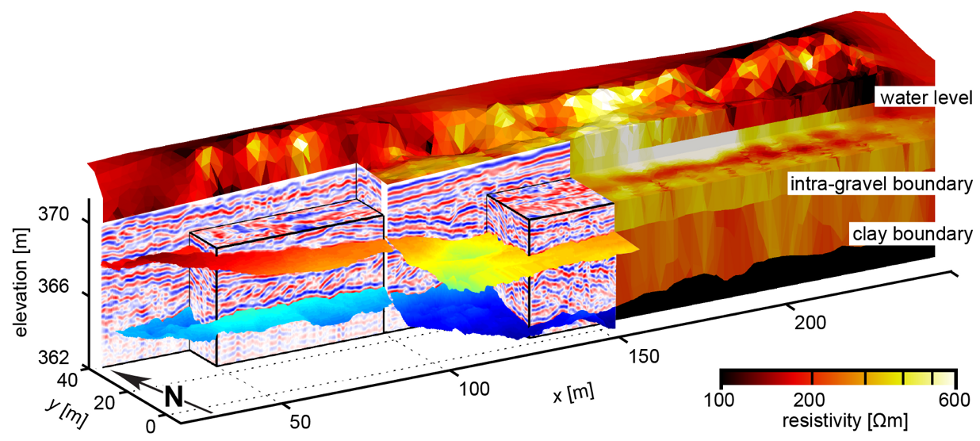Joint inversion
Minimally invasive geophysical methods provide images of subsurface physical properties such as seismic velocity and electrical resistivity, but these geophysical properties are only indirectly related to the required geological and engineering attributes (e.g., lithology, porosity, permeability). By using complementary information contained in different geophysical data types, joint inversion can help characterize the geological features of interest and aid in establishing rock physics models for quantitative analysis and enhanced interpretation.
Specifically, joint inversion can
- improve model resolution and reduce non-uniqueness of the inverse problem,
- provide geophysical models that are consistent with multiple data sources for improved interpretation and classification,
- help to establish petrophysical relationships between geophysical parameters and geological properties such as porosity or permeability,
- make it easier to identify modeling and geometric errors by comparing the models obtained by individual and joint inversions, and
- allow hypotheses testing concerning geologic structure, processes, and petrophysical relationships.
To date, most joint inversion algorithms work on regular meshes. Within the EEG group, we develop joint inversion methods for unstructured meshes that allow for inclusion of arbitrary surface topography, complex acquisition geometry and undulating geological interfaces in the inversion of geophysical data. This flexibility opens new opportunities for coupling different geophysical and hydrological data sets in constrained and joint inversions.
Current members
Joseph Doetsch, Claudio Jordi
Related publications
Doetsch, J., Linde, N., Binley, A., 2010a. Structural joint inversion of time-lapse crosshole ERT and GPR traveltime data. Geophysical Research Letters 37. doi:10.1029/2010gl045482
Doetsch, J., Linde, N., Coscia, I., Greenhalgh, S.A., Green, A.G., 2010b. Zonation for 3D aquifer characterization based on joint inversions of multimethod crosshole geophysical data. Geophysics 75, G53–G64. doi:10.1190/1.3496476
Doetsch, J., Linde, N., Pessognelli, M., Green, A.G., Gunther, T., 2012. Constraining 3-D electrical resistance tomography with GPR reflection data for improved aquifer characterization. J. Appl. Geophys. 78, 68–76. doi:10.1016/j.jappgeo.2011.04.008
Jordi, C., Doetsch, J., Günther, T., Schmelzbach, C., & Robertsson, J. O. (2017, September), Geostatistical Regularization and Cross-gradients Operators for Joint Inverse Problems on Irregular Meshes, In 23rd European Meeting of Environmental and Engineering Geophysics
